Any third person in the soil encounters a problem such as laying and peeling nails, clouding of the plate - this is onychomycosis. The disease affects different age groups. The nails of the nails in the legs quickly spread and adapt to new conditions.

What is nail fungus?
Onychomycosis is a pathology that destroys nail plates. The fungus eats keratin - the base of the nail construction. The infection falls into the intercellular space and begins its separation. In the advanced stages, the pathology is able to affect the skin of the feet, the interconnecting area.
Do not start the mushrooms and treat it immediately
Causes of nail fungus
One infected with onychomycosis is quite easy. The infection can fall on the beach, the public spirit, the pool. A high probability of catching a fungus from relatives or infected acquaintances (using ordinary lives).
There are some main prerequisites that can provoke the introduction of the virus into the human body:
The nail fungus begins on the thumb. In addition, in parallel, the virus is able to develop on the little finger.
Types of nail fungus
Onychomycosis can provoke several types of fungi. Dermatophytes, for example, appear in the new form of the nail. There is a formation of yellow spots along the edges or in the middle of the plate. Moreover, longitudinal stripes can be observed along the affected area.
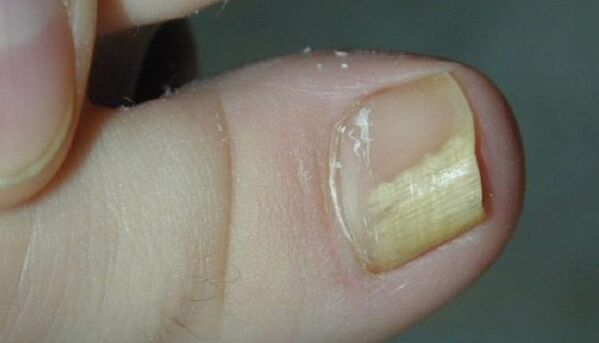
In the late stages of nail fungus, surgical intervention may be required
Yeast mushrooms provoke deformation of the nail plate. She is very sophisticated and begins to leave her place, becomes gray. Metabolism in damaged cells worsens, the furrows appear on the nail roll. Moreover, inflammation, edema, redness appear in the adjacent epidermis, the disappearance of the nail skin is observed.
Mold bacteria can damage the nail plate if there are already diseases that provoke nail food disorders. In this case, there is also a cloud of tile, a change in its color (from light and green yellow to brown and even black).
To detect the cause and pathogen of negative changes in the skin and nails, you should contact a specialist. An independent determination of the disease and its treatment without consulting with a physician can be fraught with consequences.
The stages of the disease
Nail mycosis gradually affects healthy cells. The disease has several stages of development, each of which has its own specific manifestations. It looks like the development of fungi in various forms, shown in the picture.
The first stage of onychomycosis (normotorophytic) has no bright manifestations. In most cases, it continues hidden. The first signs - the nail fades slightly, its color changes, microcrocytes and yellow spots are formed in the form of circuits or length, and tuberosity appears. A novice fungus can be associated with itching and burning. It is difficult to properly recognize infection at the initial stage, as the symptoms are similar to other diseases (psoriasis, liver pathology).
If treatment does not start on time, the disease will go to the next stage - hypertrophic. The nail thickens, dark. There is a deformity of the plate, crowning and its destruction.
The advanced form of nail disease is manifested by a strong thinning of the nail plate, which leads to its further rejection. The adjacent skin becomes blue, an unpleasant odor appears.
In case of infection with simultaneous infections, a purulent process may occur.
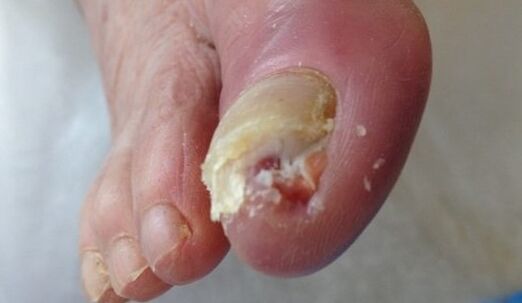
Symptoms
Onychomycosis most often affects nails in the legs, hands suffer less frequently. The disease begins with the thumb and little finger (the outer edge is affected), touching smoothly on all the plates.
The main symptoms of onycomycosis will help determine the fungal infection:
To know how to know the disease at an early stage, you can see the main manifestations of the nail fungus in the picture. This will at least understand how the development of the infection begins, and in the event of similar signs, consult a doctor.
You need to take action on the first features of the nail fungus
Treatment methods
Onikomicosis therapy depends on the degree of neglect and individual characteristics of the course of the disease. Treatment should be complex, and consists of medicines and auxiliary methods of traditional medicine.
Traditional medicine
Nail mycosis can be treated by home methods. Folk remedies are good assistants in complex disease therapy.
Acetic bath
In 2 liters of hot water (37 degrees), dilute 5 tablespoons. l. 9%vinegar. The legs should grow in such a solution for at least half an hour. Next, clean the softened, keratinized nail layer with a file, and treat the affected areas on the feet and between the fingers with a pumice. After such manipulation, it is recommended to apply a cream or antifungal solution. Procedures do regularly (1-2 times daily) within a month. Read more about the treatment of fungal vinegar.
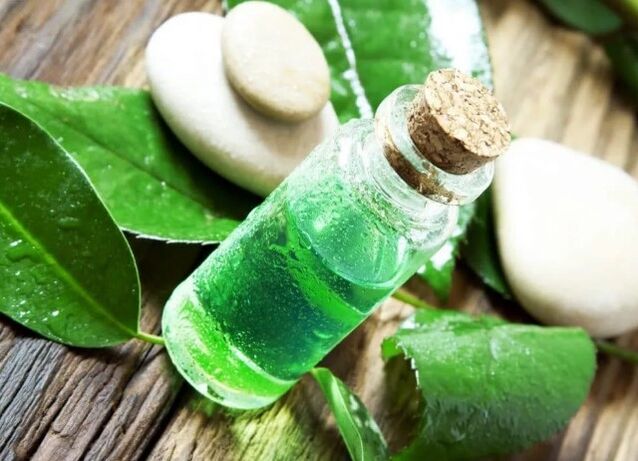
Tea tree oil
Damaged nails should be lubricated before bedtime, billed and removed overnight. In the morning, remove the bandages, clean the nail from the keratinized layer and again drip the tea tree oil, but no longer wrap it. It is important to continue treatment until a healthy nail starts to grow. Read more about tea tree oil.
Iodine processing
Damaged nail plates should be lubricated twice daily with a 5%iodine solution. Therapy lasts at least 3 weeks. At the same time, pharmacy medicines with external and internal use prescribed by a physician are actively used. Read more about treating nail fungus with iodine.
Using iodine in the treatment of fungi will help accelerate the recovery process
Before each manipulation from popular products or pharmacies, it is previously recommended to evaporate in a salty soda or solution, and remove as much keratinized layer. Complete preparation of the plaque for the procedure allows the medicines to penetrate deeper into the affected layers and fight the infection more efficiently.
Fungal diseases are the most common diseases in the soil. We offer to consider how to treat the nails of the nails in the legs, what professional medicines (tablets, oil, cream, varnish, other medicines) and popular legal remedies are used for this.
Onychomycosis (also known as "dermatophytic onykhomycosis" or "belt lichen") is the most common nail infection, according to statistics, every tenth in the world suffers from this disease. Despite the fact that the disease should be treated at home, this infection is very difficult to renovate externally, often the infection is associated with relapses and inflammation.
Before starting active actions, it is necessary to minimize the negative impact of the external environment, eliminate the reasons why the fungus appeared under the nails in the foot:
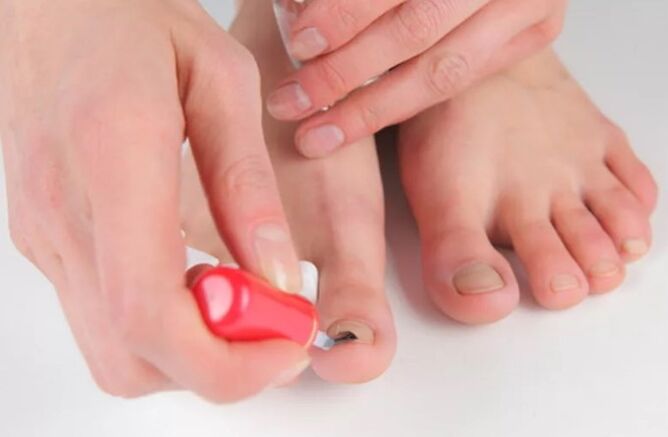
Treatment of fungi
To attract onycomycosis, you will need a lot of effort and tools (if you plan to use professional tools). Consider different methods on how to handle the nail fungus on the foot.
The methods of modern medicine
Popular recipes
At home, you can affect the injured area with external medicinal remedies. For example, she has tried herself to clean the nails with iodine. Twice a day, you need to apply a iodine solution to the nail plate and the space around it, this disinfects the nails and kills active disputes. It should be borne in mind that iodine said the nails, so after a weekly course you have to take a break for a few days.
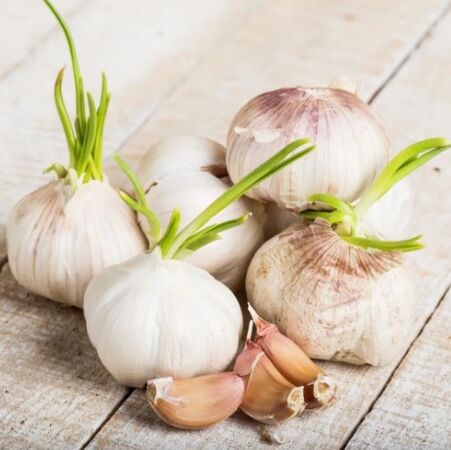
You can use simple garlic, it disinfects and kills any bacteria. We clean a clove, rub in a grater, the resulting savagery is applied to the damaged area, wrap it with a bandage. We leave the mixture at night, leave in the morning, repeat regularly until the nail condition improves.
A good external medicine is obtained with apple cider vinegar. Every day twice a day you need to wipe your feet with this juice, the solution is applied not only directly to the injured areas but also around them. The fresh water basin will need 200 ml of vinegar. With this method, you can also get rid of increased sweating and unpleasant smell.
Another recipe with vinegar: a glass of products mix with an egg and 100 grams of butter, mix very well the resulting severity and leave it in the fridge at night, in the morning you can use it as compresses.
You can remove the fungus from the nails using celandine juice. As for warts, there is no need to dilute. You break the leaves of the plants, a reddish or yellow liquid is released at the place of decay, rub it in the nail deformation areas. Use daily for a week, as you take rest for 3-5 days. Check yourself in the allergies, otherwise there may be consequences.
Even coffee is used to fight aggressive yeast. This natural antioxidant helps to cleanse the upper layers of the skin from dead cells and disputes. We create very strong coffee, cool, reduce the damaged limbs in this solution. You will need 5 to 10 procedures to get rid of the fungus.
A bow will help from the top. Peel the vegetables, rub in a grater, mix with a spoonful of honey and apply mass on the nails and space around them. Keep a few hours each day, within two days you will notice an improvement, and within a week all symptoms will disappear.
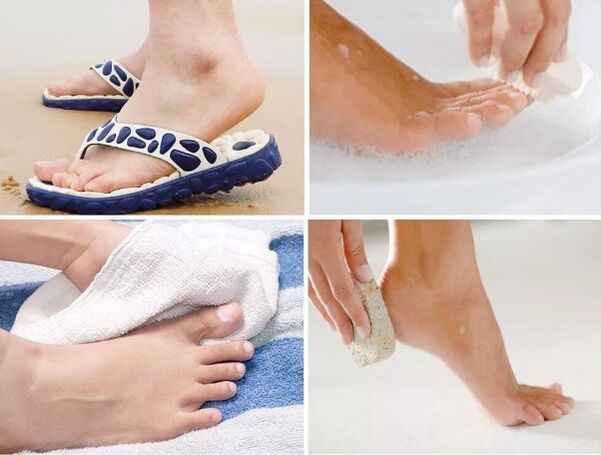
Practical advice
Prevention of fungi of the thumb and legs is a very important task. Immediately after being saved from disaster, you will find yourself in an increased risk area, because the body will be very sensitive to this kind for a long time, infections.
Nail fungi (onychomycosis) is the most common disease in which nails turn yellow, become fragile and thick, covered with cracks. In the early stages, the symptoms of nail fungus are barely visible. Treatment of the disease is difficult due to impaired cellular immunity. The disease continues slowly, without progressing the proper treatment and can accompany the patient throughout his life.
Most often, nail fungi are discovered in a man and people with weakened immunity. Patients with diabetes, overweight, face blood vessel pathology and skin diseases undergo diseases. With high sweaty feet, there are more chances of damage to the fungus on the skin of the feet and nails in the legs.
Mushrooms can get on nail plates from clothes, shoes, manicure bands, carpets, flooring. It enters the nails through the skin microcirculation and through the nail bed. It is very very warm and wet: in spirits, baths, closet rooms and pools. In healthy people, the disease rarely develops.

























